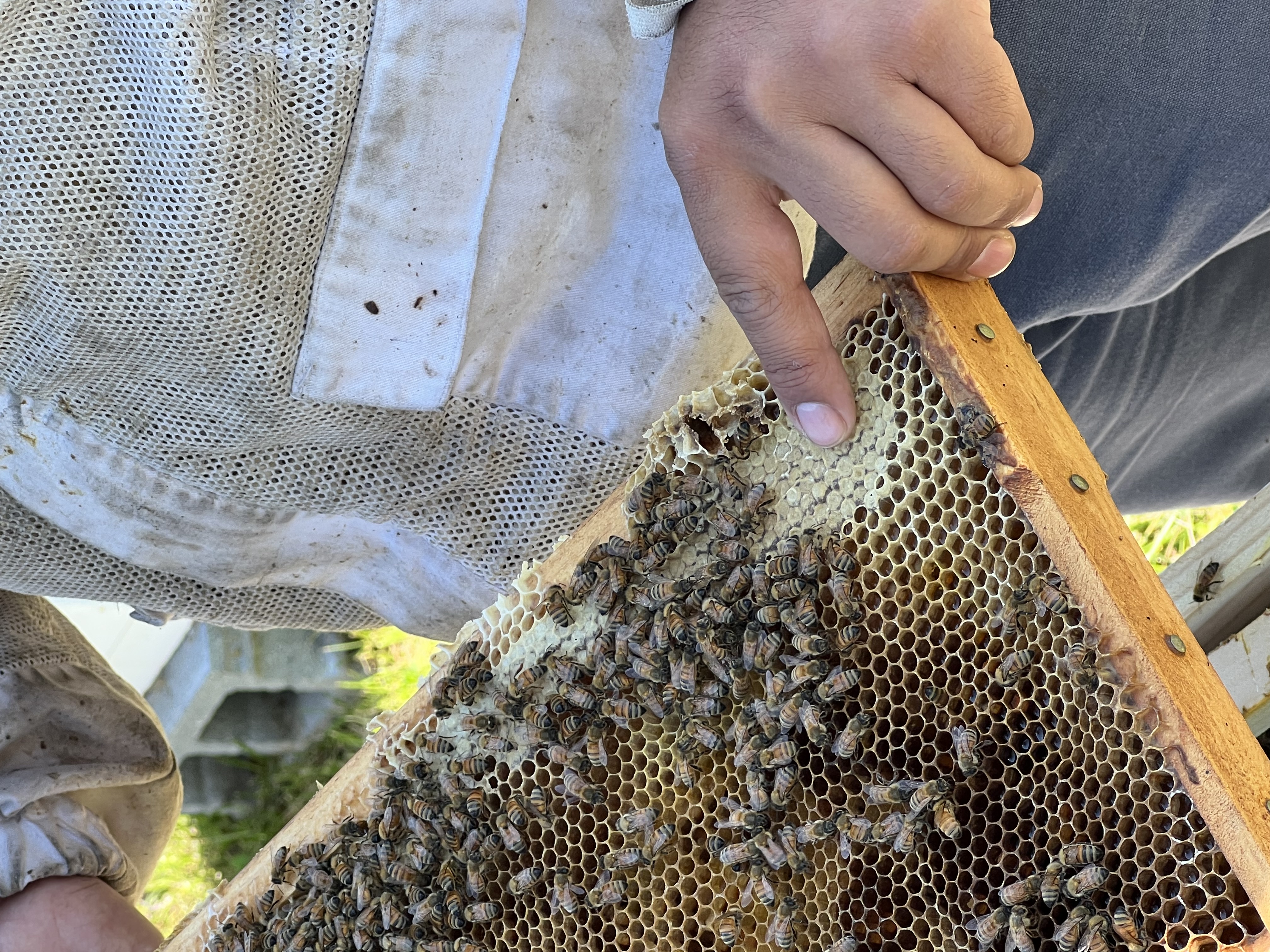Tuesday, February 20, 2024
In case you didn’t know, since 2020, February has been designated Winter Honey month in Virginia, a fact perhaps not well advertised outside of the beekeeper community. In this session of the Virginia General Assembly, Delegate Patrick Hope (D-1) introduced HB 517 to designate the European Honey bee (Apis mellifera) the official state pollinator.
One might wonder, what is all this buzz about bees and honey this month? As the calendar swings around to February, most think of chocolate as the timely sweet, not winter honey. If one thinks ‘honey’ at all, it’s likely as an endearment for that special someone to whom one might gift chocolate in recognition of February’s Valentine’s Day. While in ancient times, Egyptians and the Chinese used caramelized honey with fruits and nuts to make candies, in modern day, chocolate is the king cupid of candies.
 European honeybee (Apis mellifera), the only hive bee and only human consumed honey producing pollinator
European honeybee (Apis mellifera), the only hive bee and only human consumed honey producing pollinator
What is ‘winter honey’? Honey produced from the nectar of summer flowers, such as lavender, sunflowers, and clover, takes on slight hues from the flower and tends to a light color. Fall honey produced from the nectar of fall flowers, such as aster and goldenrod, is darker. The darkest color comes from borage, sumac and buckwheat nectars, the later bloomers. Winter honey is the darkest in color although all raw honey darkens a bit with age. There are more than 300 unique types of honey available in the United States, each originating from a different floral source.
There are about 4,000 bee species native to the United States, ranging in size from a tiny two millimeters Sweat bee, to the B-52 bombers of bees, the Carpenter bees, about the size of a grape. Only the honey bee makes honey that humans eat, but in that sense they can be considered livestock, and compete with native bees.
Most bees are solitary, nesting alone in the ground or dried plant stalks, rather than in social hives like the honeybee. All bees gather nectar and pollen. It’s their job as important pollinators of plants in our ecosystem for which they are best known and prized.
The European honey bees were sent to Jamestown in 1622, when requested by colonists to help improve crop growth. George Washington raised bees at Mount Vernon and is said to have enjoyed honey and hoecakes almost daily for breakfast. Over the years, honey production has drawn both commercial enterprise and hobbyists. In 2022, Virginia produced 240,000 pounds of honey for sale, of the 125 million pounds sold in the United States. That’s only a small niche of the market, compared to the number one producing state, North Dakota, which produced over 28 million pounds.
Most commenters on the General Assembly’s public comment site largely poo-poo’ed the idea of a non-native European as the Virginia pollinator mascot. Instead commenters lauded the host of the Commonwealth’s native bees, including numerous species of Bumble (Bomfus app), Digger (Apidae spp) Mason (Osmia app), Miner (Andreno app), Nomad (Nomad app) Plaster (Colletidae app), and tiny Sweat (Halite app) bees, totaling 477 Virginia native species.
Delegate Hope counters that Virginia already has several named Commonwealth mascots which are non-natives, including: the State beverage, milk, from cows introduced in 1609; the State dog, the Foxhound, introduced in 1615; and the recently added Chincoteague pony, from Spain.
A House committee member, who farms, and beekeepers ’droned’ on in testimony about the Honey bee’s great contribution to State agriculture. Senator Danica Roem ‘waxed’ on over adding the Bumblebee, a native bee, as well. Hope countered, alluding to the ‘honeycomb’ of intricacy related to determining which native bees might be added. In the end, the Honey Bee prevailed in the committees of both houses.
Perhaps it is the honey bee’s unmatched celebrity, including on a cereal box, an oft used endearment, and a reputation as a hard worker, which gave it an edge over the shy, solitary native bees. Whatever the reason, the bee buzz soon will be moving to the Governor’s desk.
For a list of Virginia’s 477 bee species see, https://www.dcr.virginia.gov/natural-heritage/document/vainvertlist-bees.pdf